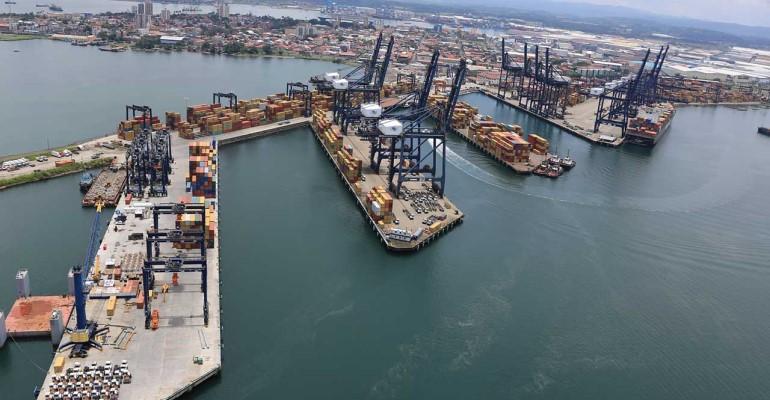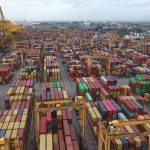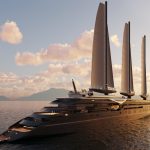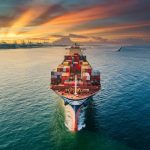Both terminals had been transferred in 1979, with the implementation of the Panama Canal Treaty, to the Panamanian administration that decided in 1996 to call an international tender to give in concession their operation. After a final round of three Biddings, Hutchison Ports was awarded on July 31, 1996, the concession to operate Balboa and Cristobal.
As PPC officials entered the premises on March 1, 1997, the first and second phases of the expansion of Balboa began immediately, with the demolition of old buildings, dredging, landfill, and refurbishment of quays to accommodate the piers for container handling.
Four years later (2001), Balboa is already at full capacity, moving 358,677 teu with 3 STS cranes. In 2005, container movements were up to 663,780 teu and 9 STS cranes. As of today, Balboa port ’s has an annual capacity of 5m teu.
Related: Special Report: Focus on Panama 2022
By 2006, PPC reached its first million teu; 12 STS cranes had arrived in Balboa. The third and fourth expansion phases of Balboa concluded in 2014/2016 extending the container yard to 65 hectares and Balboa piers to 1,670mtr of quays for box ships, 25 STS cranes, and 550mtr of quays for multipurpose vessels The port is equipped with 3,468 reefer plugs for refrigerated containers.
During those 25 years, Cristobal was revamped with 13 STS cranes. With over 20 hectares of container yard, the port has 3 berths for handling containers, a 970mtr dock and a 2m teu annual capacity. Cristobal reached its first million teu, marking a milestone in 2017. The port is equipped with 1,360 reefer plugs for refrigerated containers.
At June 2020, Panama Ports had invested $1,695m for improving both facilities. From day one of its concession to the end of 2021, Panama Ports had moved a total of 54,850,105 teu through the ports of Balboa and Cristobal, according to the Panama Maritime Authority statistics.
Laat year, Panama approved renewing for 25 more years, PPC’s concession following an audit by the Comptroller-General office certifying the company had complied with all the terms of its 1977 concession.
Today, PPC modern vision is to ‘develop a progressive automation and integration of processes within blockchain related systems like TradeLens and some other systems. On Tradelens for example many terminals have already signed in,’ says PPC president Jared Zerbe. ‘Within a few years, I expect most terminal operations will be linked to customers and stakeholders’ systems.’
‘We look at major investments to upgrade our systems and planning for ultimate destination and make the global chain more efficient.’
Balboa, with a 5m teu-capacity, will increase volume in the next two years. ‘We can expand the Ro-Ro sector as we have space. Our pilot project of warehouses in the port is being well received.’
‘Our guidelines for the years to come, is optimizing with our clients, increasing volumes and being an environmental clean port by changing diesel to electrification reefers in both terminals as well as taking steps to provide onshore power.’
‘We foresee important investments ‘to get green’. It is not only a requirement of our headquarters but of the whole maritime industry and its financiers. We take this issue very seriously, for our participation in Panama’s future and its economic growth,’ adds Zerbe. As of this year, PPC will be the first port in Panama to measure emissions.
Source: SeaTrade Maritime News






